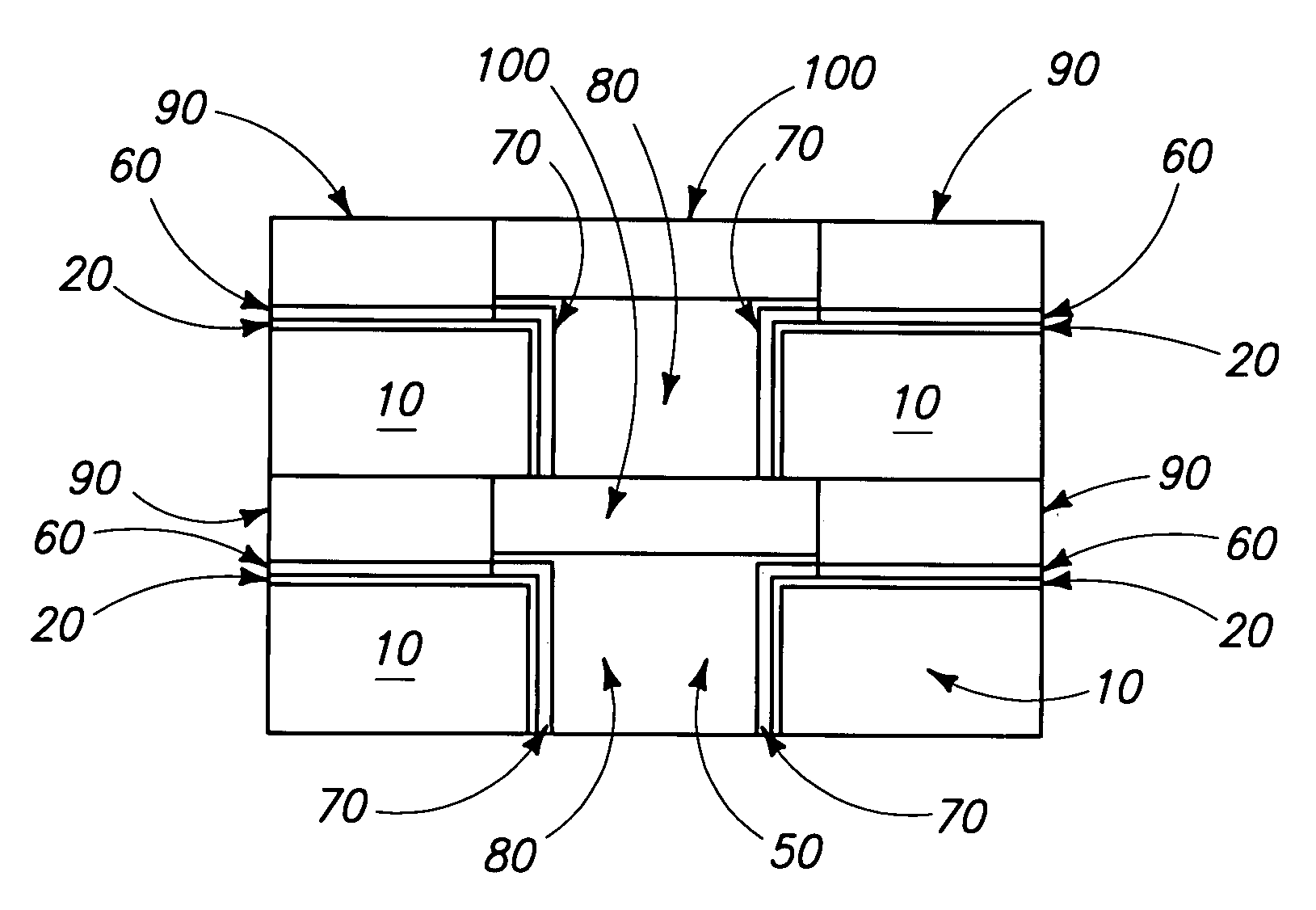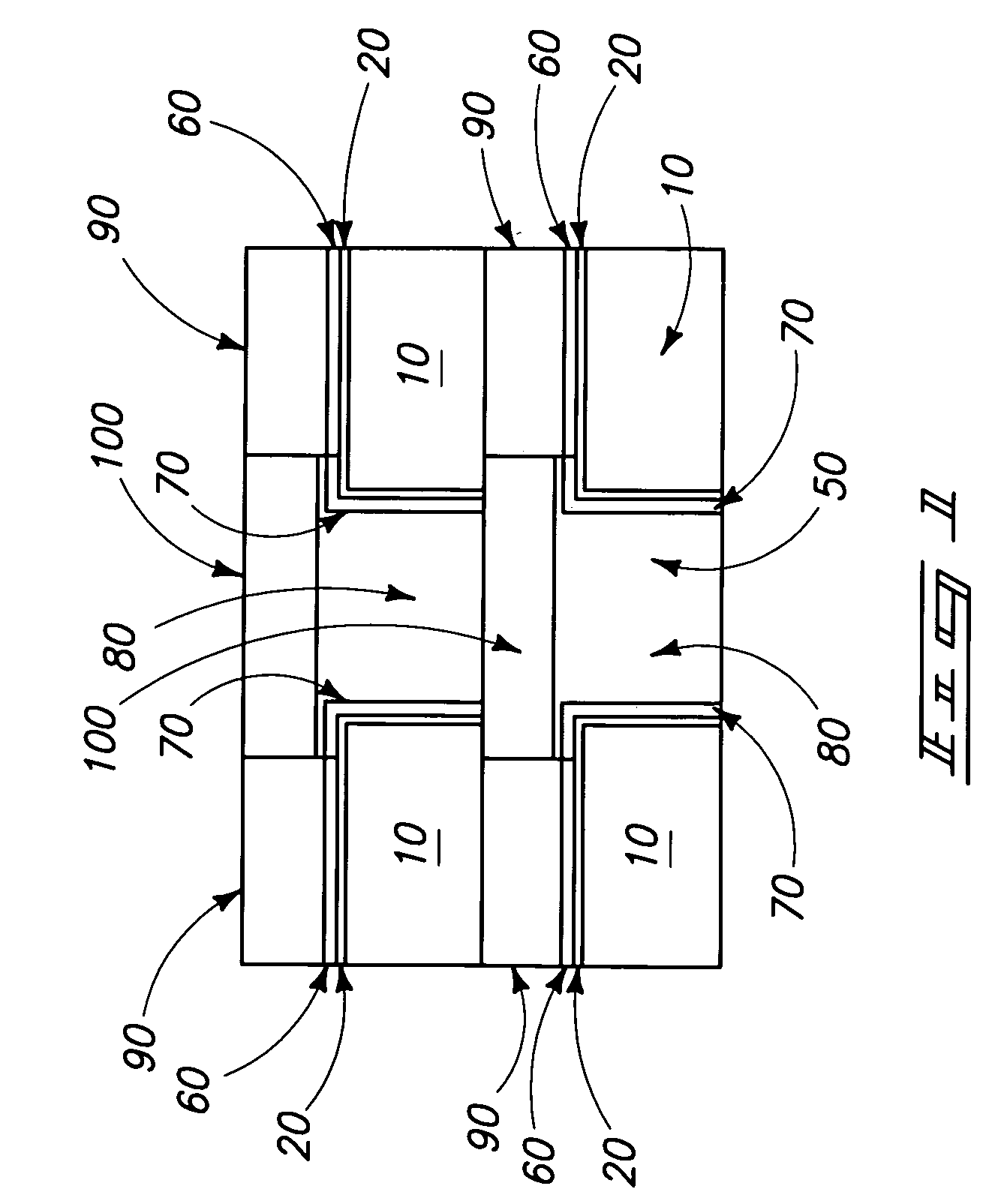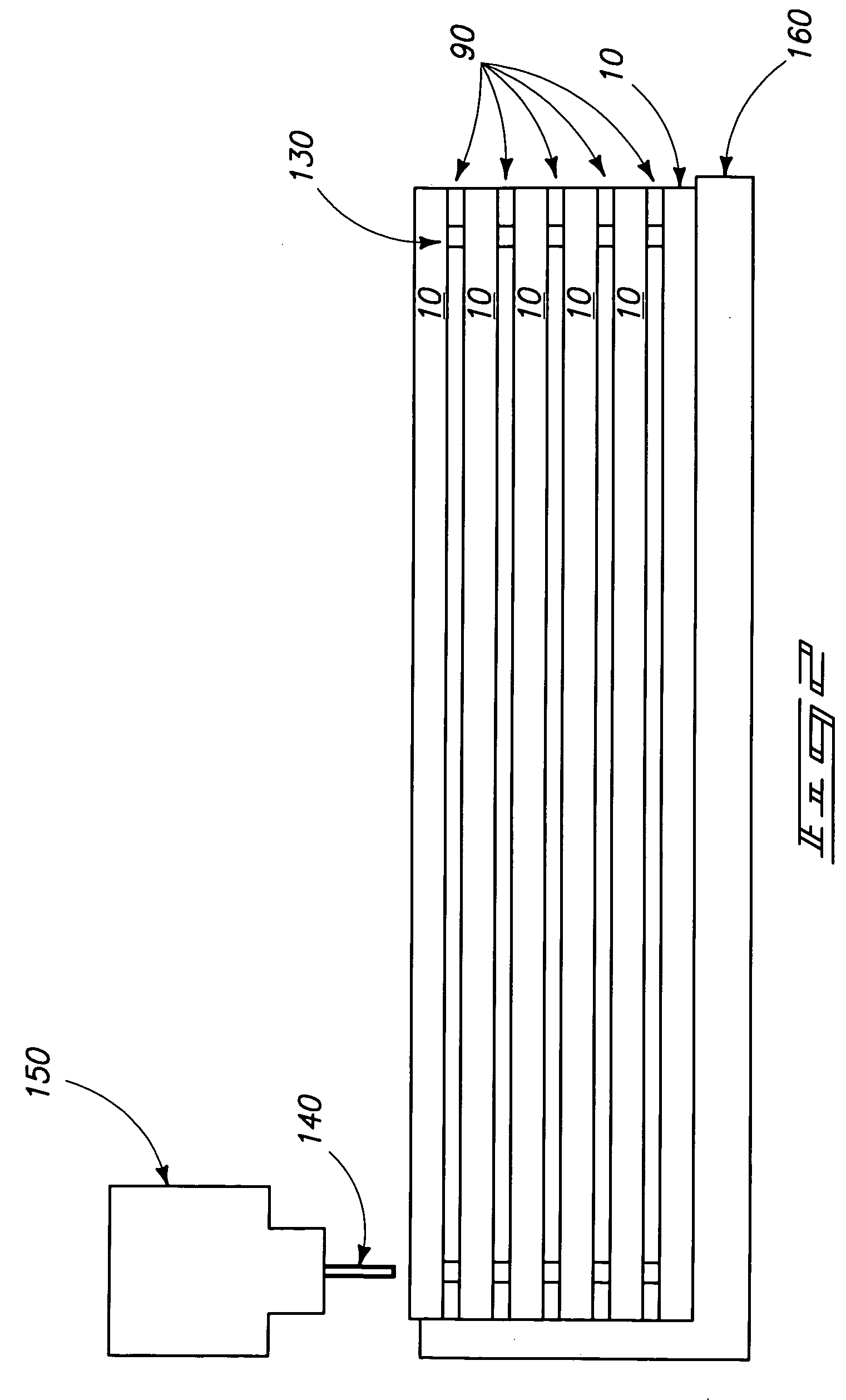Pulse-Laser Bonding Method for Through-Silicon-Via Based Stacking of Electronic Components
a technology of throughsilicon and bonding temperature, applied in the direction of basic electric elements, manufacturing tools, solid-state devices, etc., can solve the problems of high bonding temperature, difficult method implementation, and large in-plane size of wire bonding
- Summary
- Abstract
- Description
- Claims
- Application Information
AI Technical Summary
Benefits of technology
Problems solved by technology
Method used
Image
Examples
Embodiment Construction
[0025]FIG. 1 shows a section through two silicon chips connected by means of through-silicon-vias formed in accordance with an embodiment of the invention. The via provides an electrical interconnection between two silicon chips 10. Each chip 10 is provided with an via hole 50 extending through the chip 10. The interior surface of each via hole is finished with an adhesion layer 70 (for example formed of TiW alloy, Cr, or Ti), and an isolation layer 20 (for example formed of SiO2) that is also provided on the upper surface of each chip. The space between the two chips 10 is filled with a polymer bonding material 90. Suitable materials for the polymer material 90 include polyimide (PI), benzocyclobytene (BCB), epoxy, a non-conductive adhesive, or silicon rubber.
[0026]Each via hole through the chips 10 is filled with metal (e.g., copper, gold, tin, indium, silver, nickel, solders) to form a metal plug that adheres to the adhesion layer 70. Between the plugs that fill the respective vi...
PUM
| Property | Measurement | Unit |
|---|---|---|
| Time | aaaaa | aaaaa |
| Time | aaaaa | aaaaa |
| Time | aaaaa | aaaaa |
Abstract
Description
Claims
Application Information
 Login to View More
Login to View More - R&D
- Intellectual Property
- Life Sciences
- Materials
- Tech Scout
- Unparalleled Data Quality
- Higher Quality Content
- 60% Fewer Hallucinations
Browse by: Latest US Patents, China's latest patents, Technical Efficacy Thesaurus, Application Domain, Technology Topic, Popular Technical Reports.
© 2025 PatSnap. All rights reserved.Legal|Privacy policy|Modern Slavery Act Transparency Statement|Sitemap|About US| Contact US: help@patsnap.com



